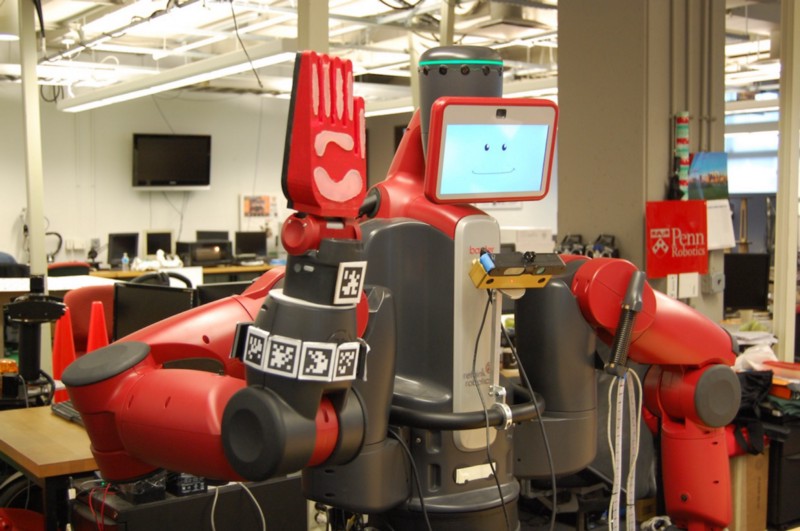GRASP Lab Alumna Naomi Fitter: What We Can Learn From a High-fiving Robot

By Lauren Salig
Roboticists put an enormous amount of effort into making robots that can walk, speak, or perform specialized activities with the goal of improving people’s quality of life. But this devotion to perfectly functioning robots might go to waste without the study of haptics, which can make robots more human-friendly by providing them a sense of touch and tactile intelligence.
Penn Engineering’s GRASP Lab is no stranger to building robots with a keen ability to sense and interact with their surroundings: The lab is home to autonomous swarms of drones, terrain-sensing robotic squirrels, and shape-shifting robots. GRASP Lab alumna Naomi Fitter zeroed in on this crucial ability to interact with a physical environment, particularly one that involves people, in her Penn dissertation.
Throughout her Mechanical Engineering and Applied Mechanics doctoral program, Fitter worked in the GRASP Lab’s Haptics Group, researching how humans perceived a high-fiving robot. She saw this study as a first step towards understanding the many factors that impact humans’ perception of robots and their willingness to interact with them.
In a piece she wrote for IEEE Spectrum, Fitter describes making tiny changes to the high-fiving robot — increasing the arm firmness, adding responsive facial expressions, making the robotic arm more reactive to touch — and noting how people’s beliefs about the robot’s pleasantness or safety changed.
Fitter, now an assistant professor in the Collaborative Robotics and Intelligent Systems Institute at Oregon State University, detailed the results of her dissertation study and the importance of haptics in her post:
The human sense of touch is so naturally ingrained in our everyday lives that we often don’t notice its presence. Even so, touch is a crucial sensing ability that helps people to understand the world and connect with others. As the market for robots grows, and as robots become more ingrained into our environments, people will expect robots to participate in a wide variety of social touch interactions. At Oregon State University’s Collaborative Robotics and Intelligent Systems (CoRIS) Institute, I research how to equip everyday robots with better social-physical interaction skills — from playful high-fives to challenging physical therapy routines.
Continue reading at IEEE Spectrum.
